10 Unbreakable Rules for Successful Options Trading

Are you ready to unlock the secrets to consistent success in options trading? Imagine transforming your trading strategy from a risky gamble into a disciplined, calculated approach that consistently delivers results.
The truth is that options trading can be one of the most lucrative avenues in the financial markets, but it’s also fraught with complexity and risk. Without a solid foundation, even the most promising trades can quickly turn into costly mistakes.
In this high-stakes arena, where one wrong move can mean the difference between profit and loss, adhering to a set of proven principles isn't just beneficial—it’s essential to navigating the options market with confidence and precision.
The following 10 unbreakable rules of options trading are not just guidelines—they are your roadmap to success. These rules will empower you to make informed decisions, manage risk effectively, and capitalize on market opportunities with the discipline of a seasoned pro. Ready to take control of your trading journey? Let’s dive in.
1. Understand the Basics
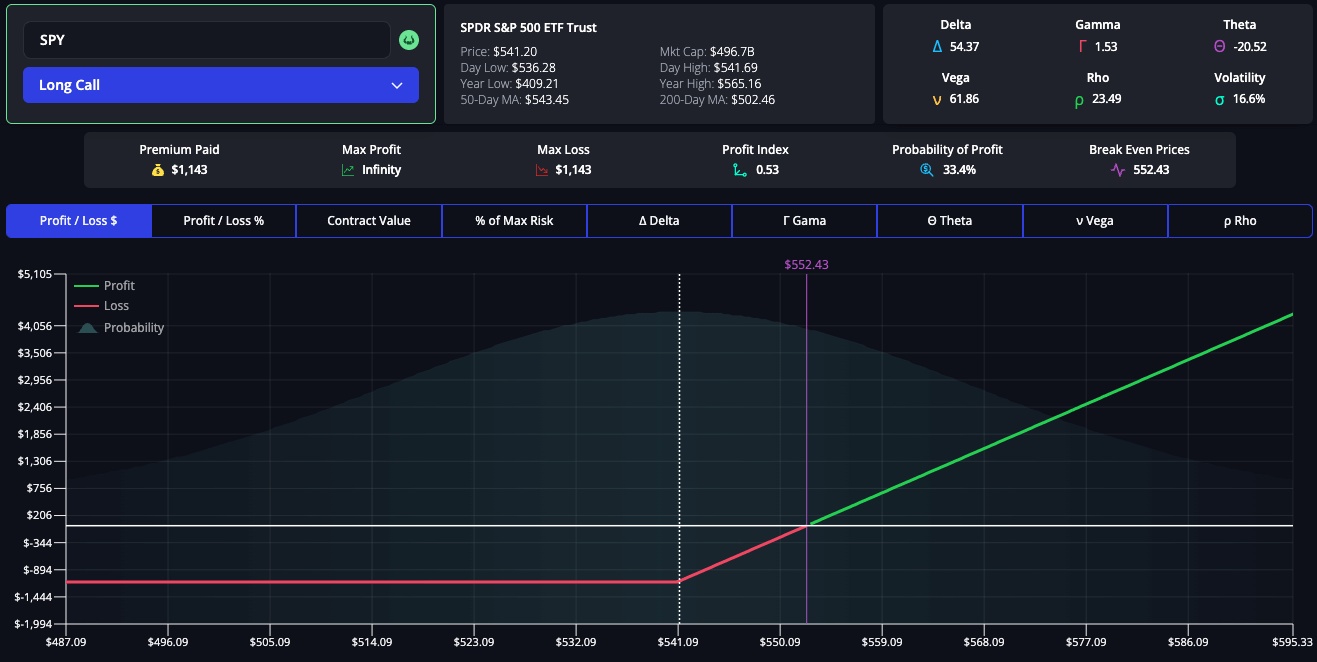
Before diving into the world of options trading, it's crucial to have a firm grasp of the basics. This means understanding the key components of options, such as strike prices, expiration dates, and the distinction between calls and puts.
The underlying concepts of options are the foundation upon which all trading decisions are built. Without this knowledge, you're effectively gambling rather than trading. Ensure you're comfortable with how options work, the factors that influence their pricing, and the potential risks and rewards involved.
Expand Your Knowledge:
- Deep Dive into Greeks: In addition to the basics, understanding the "Greeks"—Delta, Gamma, Theta, Vega, and Rho—is essential. These metrics help traders assess the risk and potential reward of an options position.
- For example, Delta measures how much an option's price will change with a $1 move in the underlying asset, while Theta represents time decay, indicating how much an option's price will decline as it approaches expiration.
- Mastering the Greeks can significantly enhance your ability to manage trades and predict outcomes.
Key Takeaway: Knowledge is your first line of defense against costly mistakes in options trading. Go beyond the basics by mastering the Greeks to manage risk effectively.
2. Use Technical Analysis
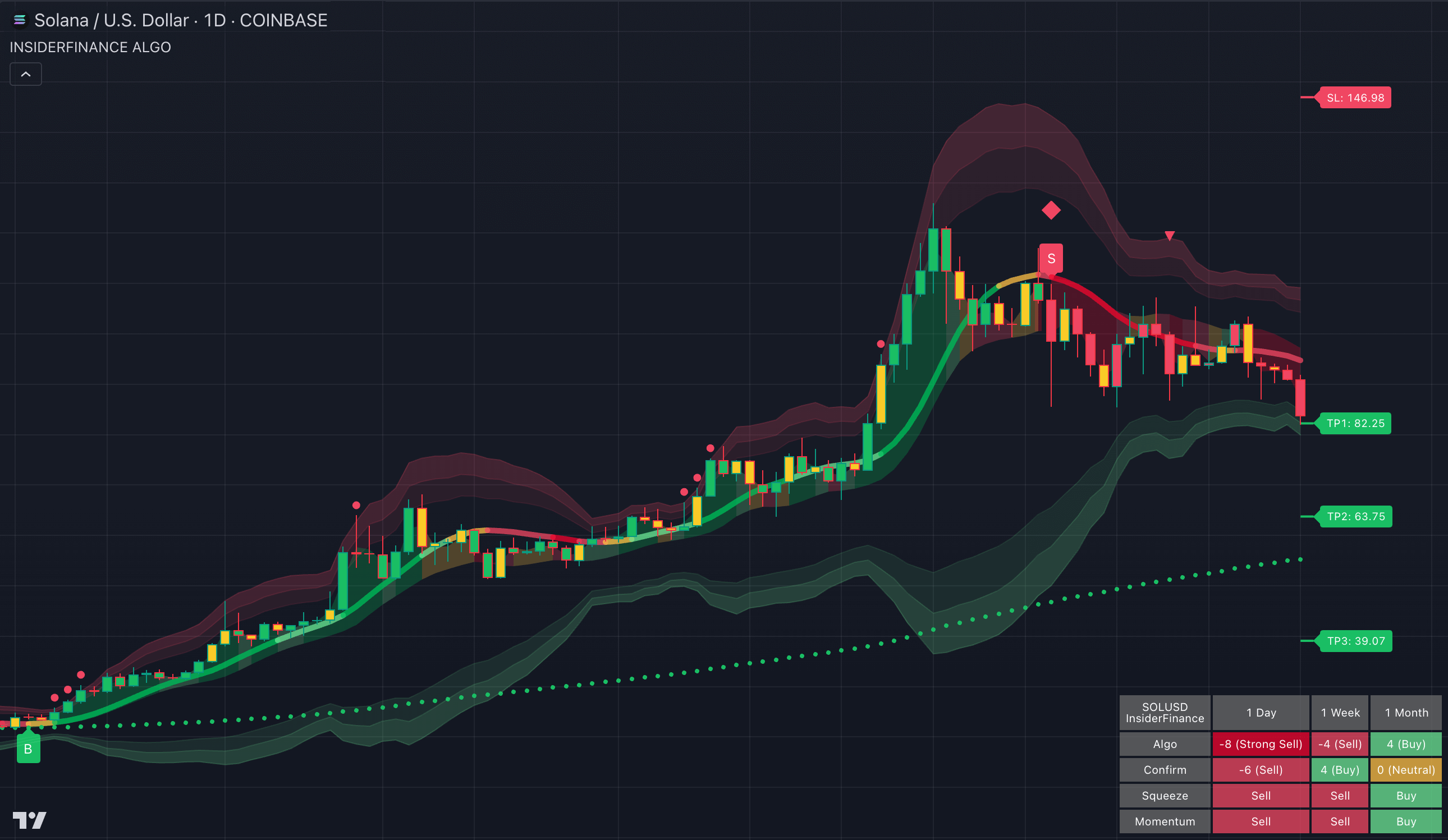
Technical analysis is a vital tool for timing your trades effectively. By analyzing price charts and using indicators like moving averages, oscillators, and trend lines, you can identify potential entry and exit points with greater precision.
Understanding support and resistance levels can help you set realistic price targets and avoid entering trades at inopportune times. Always remember that the best trades are those that align with both technical signals and broader market trends.
Enhance Your Analysis:
- Incorporate Multi-Timeframe Analysis: Evaluate trends and patterns across multiple timeframes (e.g., daily, weekly, monthly) to gain a comprehensive view of market conditions.
- A trend that appears strong on a daily chart might be part of a larger correction on a weekly chart.
- This multi-timeframe approach ensures that your trades align with both short-term and long-term trends, increasing the probability of success.
Key Takeaway: Use technical analysis to enhance your decision-making and increase your chances of success by incorporating multi-timeframe analysis.
HIGH POTENTIAL TRADES SENT DIRECTLY TO YOUR INBOX
Add your email to receive our free daily newsletter. No spam, unsubscribe anytime.
3. Watch Options Flow
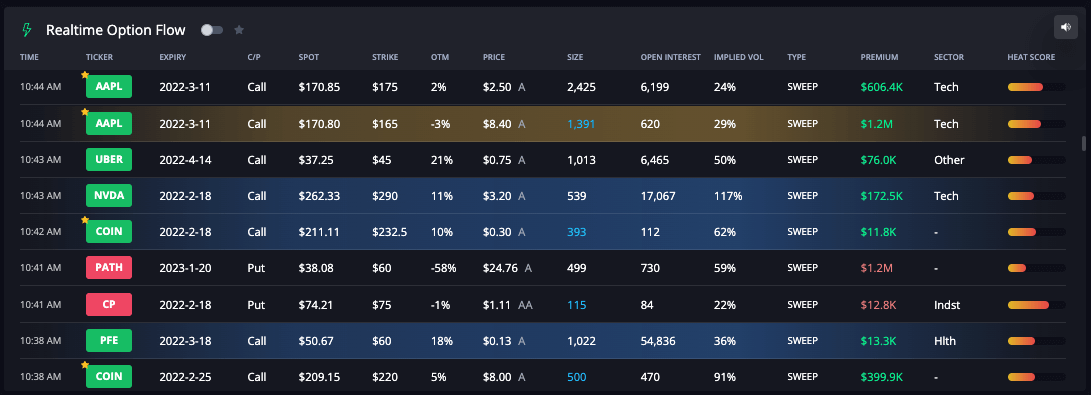
Options flow data is a goldmine for traders. It provides insights into where institutional money is being deployed, often signaling upcoming market moves before they occur.
Monitoring options flow can reveal patterns of buying and selling that may indicate the direction of a stock or sector. Smart money—large institutions and hedge funds—often have access to more information than retail traders, so following their lead can provide a significant advantage.
Optimize Options Flow Analysis:
- Focus on High Open Interest and Volume: High open interest and volume in options can indicate strong market sentiment or upcoming significant moves.
- Open interest represents the total number of outstanding contracts, while volume shows how many contracts were traded in a given period.
- A combination of high volume and increasing open interest often signals that large players are building positions, which can lead to substantial price movements.
Key Takeaway: Pay attention to options flow data, particularly high open interest and volume, to gauge where the smart money is going.
4. Manage Risk Relentlessly
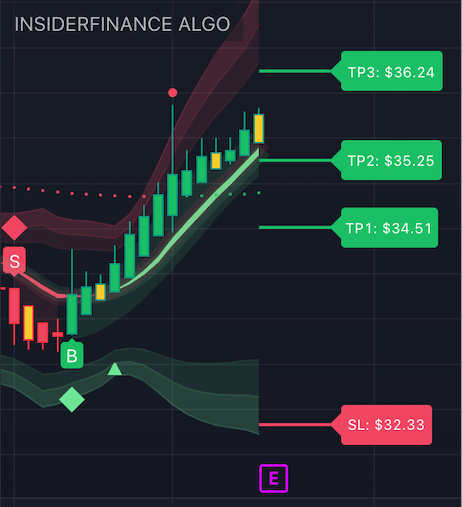
Risk management is perhaps the most critical aspect of options trading. Given the leveraged nature of options, the potential for both gains and losses is amplified.
Every trade you make should have a predefined risk management strategy, including clear stop-loss and take-profit levels. This discipline helps protect your capital and prevents catastrophic losses. Remember, in options trading, it's not just about how much you can make—it's about how much you can keep.
Strengthen Your Risk Management:
- Position Sizing Strategy: Implement a strict position sizing strategy to control risk. For example, never risk more than 1-2% of your total trading capital on a single trade.
- This approach ensures that no single loss can significantly impact your overall portfolio.
- Additionally, consider using a "risk/reward ratio" of at least 1:2, meaning for every dollar risked, aim to gain two dollars. This strategy aligns your risk management with realistic profit goals.
Key Takeaway: Protect your capital by implementing strict risk management protocols, including a well-defined position sizing strategy.
5. Never Trade Blindly
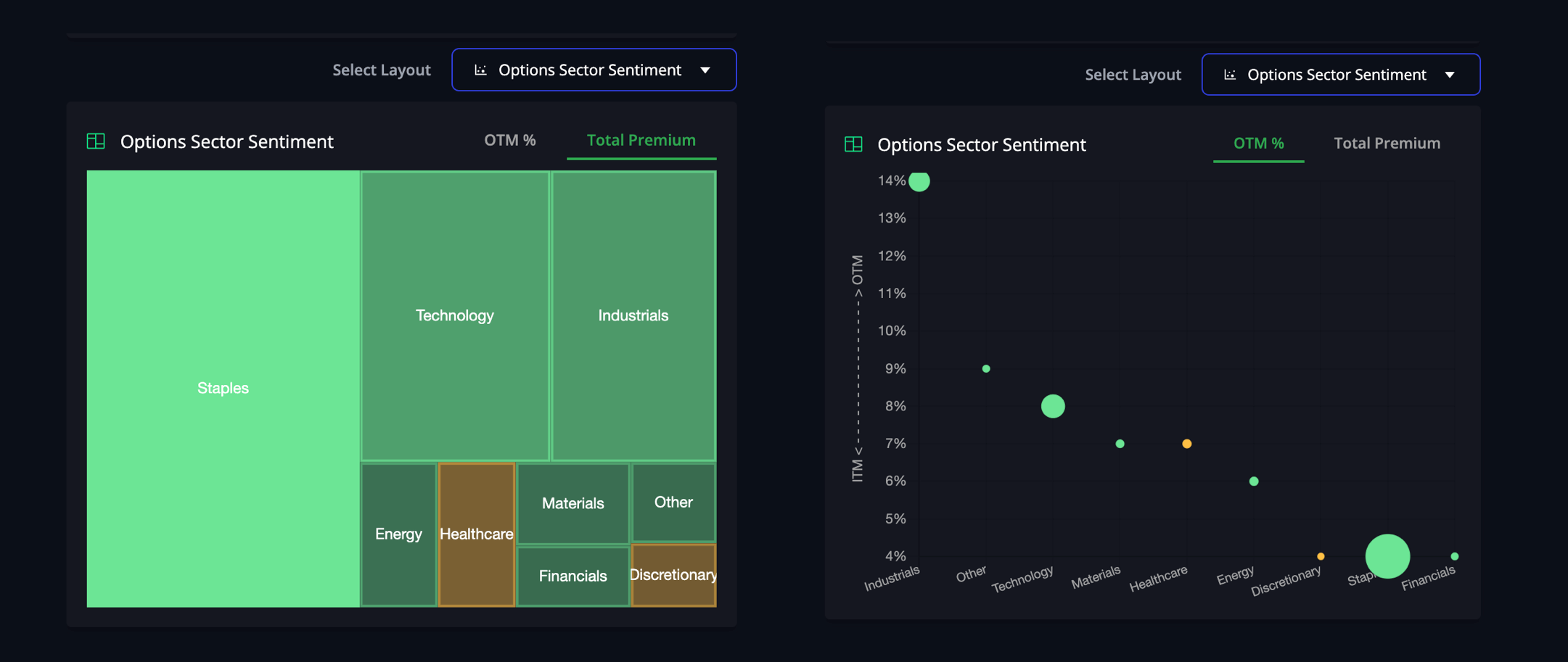
Relying on a single piece of information to make trading decisions is a recipe for disaster. Instead, adopt a multi-faceted approach that combines options flow data, technical analysis, news sentiment, and broader market trends.
The more confirmations you have, the higher your probability of success. This holistic approach ensures that your trades are based on a comprehensive analysis rather than a single data point, which can often be misleading.
Enhance Your Trade Validation:
- Use a Trading Checklist: Create a detailed trading checklist that incorporates all the factors you consider before entering a trade.
- This could include confirmation from at least three sources (e.g., technical analysis, flow data, news sentiment), checking upcoming earnings reports, and evaluating market volatility.
- A checklist ensures that you maintain discipline and consistency in your trading approach.
Key Takeaway: Validate your trade ideas using multiple sources of information, and use a trading checklist to ensure thorough analysis and higher accuracy.
6. Stay Updated on Market News
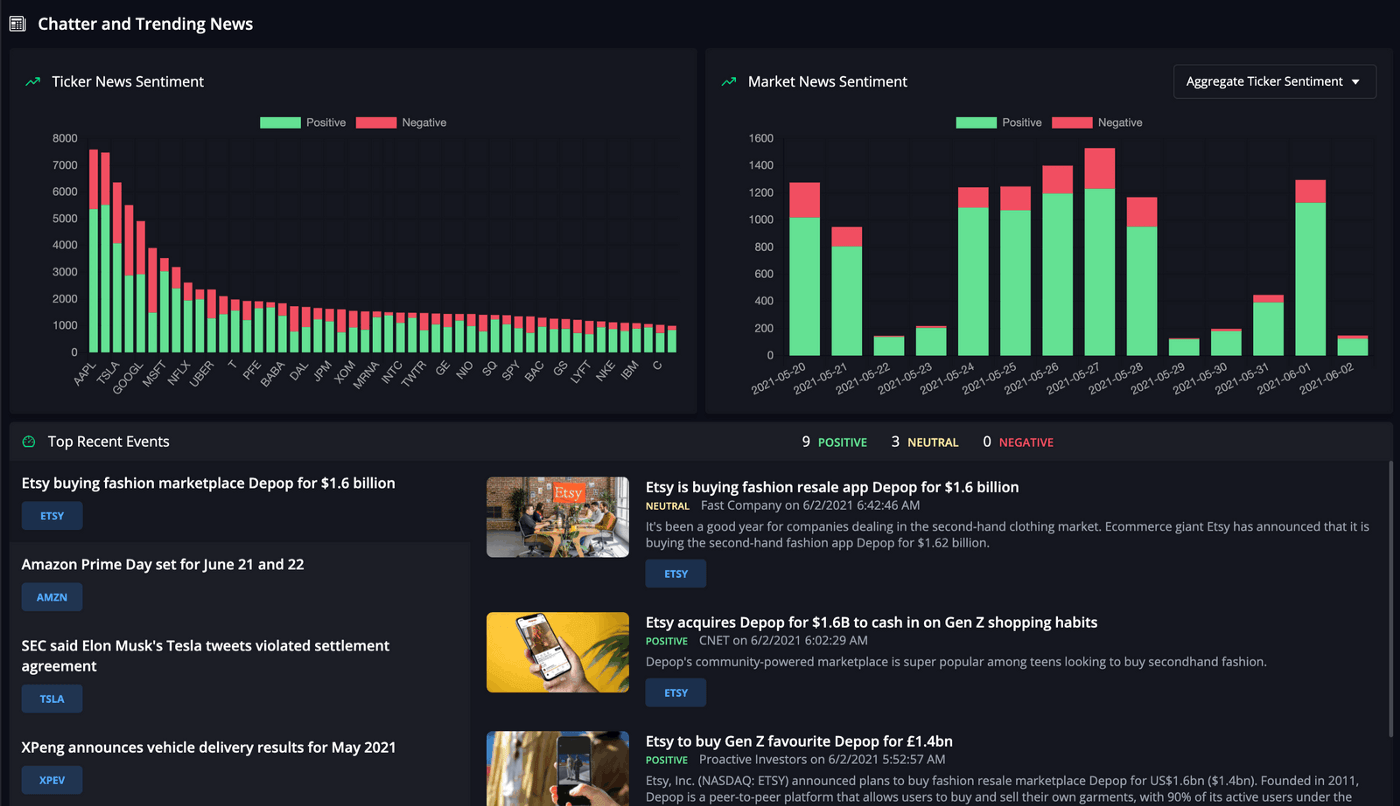
The options market is highly sensitive to news, and unexpected developments can cause significant volatility. Therefore, staying informed about upcoming events like earnings reports, economic data releases, or geopolitical developments is crucial.
By being aware of these events, you can better anticipate market movements and adjust your trading strategies accordingly. Informed traders are better equipped to manage risk and capitalize on opportunities.
Improve Your News Strategy:
- Economic Calendar Monitoring: Regularly monitor an economic calendar for upcoming events that could impact your trades, such as Federal Reserve meetings, inflation reports, and non-farm payroll data.
- These events often lead to market-moving announcements, and being aware of them allows you to adjust your trading strategy proactively.
- Additionally, consider subscribing to news alerts for real-time updates on breaking news.
Key Takeaway: Keep a close eye on news that could impact your trades, using tools like an economic calendar and news alerts to stay informed.
7. Trade with the Trend
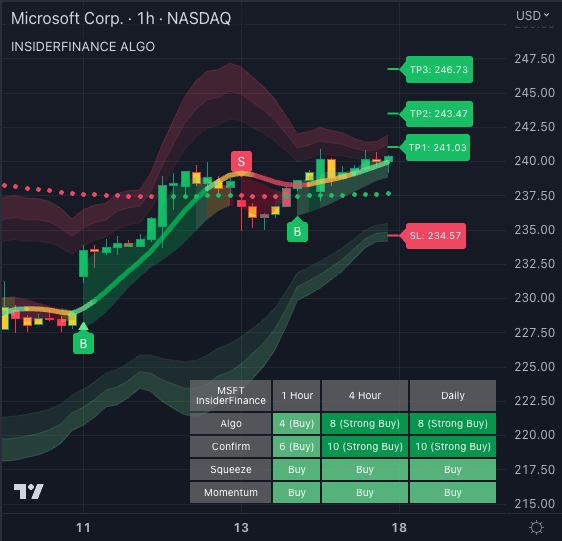
The old adage "the trend is your friend" holds particularly true in options trading. Going against the macro trend often results in losing trades, as the broader market direction tends to overpower short-term fluctuations. Aligning your trades with the prevailing trend increases your chances of success and allows you to ride the momentum rather than fight against it.
Deepen Trend Alignment:
- Use Trend Confirmation Indicators: To ensure you are trading with the trend, utilize trend confirmation indicators like the Average Directional Index (ADX).
- The ADX helps determine the strength of a trend, with readings above 25 indicating a strong trend.
- Combining ADX with other trend-following indicators, such as the MACD (Moving Average Convergence Divergence), can provide robust confirmation that you are trading in the direction of the dominant trend.
Key Takeaway: Align your trades with the broader market trend for a higher probability of success, using trend confirmation indicators for stronger validation.
8. Focus on Unusual Options Activity
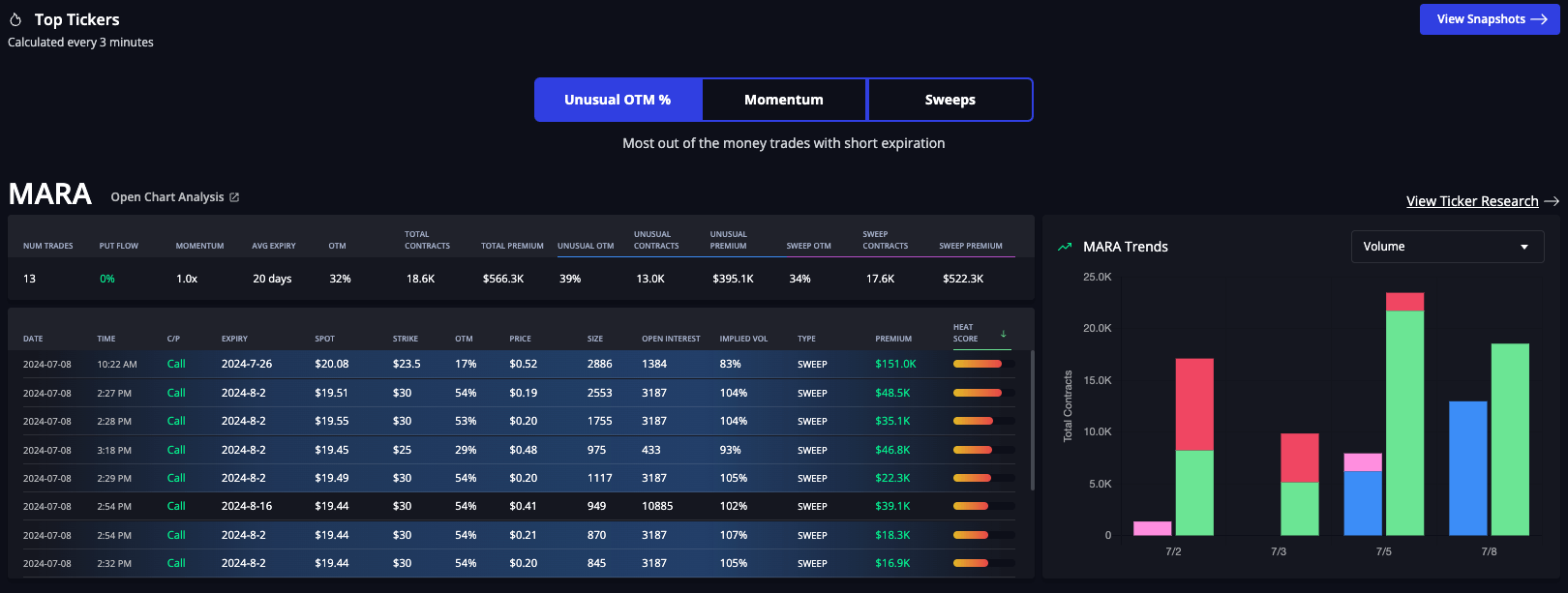
Unusual options activity can be a powerful indicator of impending market moves. These large, unexpected trades often signal insider knowledge or high-conviction bets by institutional investors.
By tracking this activity, you can gain early insights into potential big moves and position yourself accordingly. However, it's important to analyze the context of these trades to understand whether they align with your trading strategy.
Fine-Tune Your Focus:
- Analyze Contextual Factors: When you spot unusual options activity, analyze the broader context, including the stock's recent price action, sector performance, and any relevant news.
- For instance, if unusual activity coincides with a stock trading near a major support or resistance level, it could indicate a significant move.
- Understanding the context helps you differentiate between noise and genuinely actionable signals.
Key Takeaway: Use unusual options activity as a leading indicator, but always analyze the broader context to ensure the signal is actionable.
9. Maintain Emotional Discipline
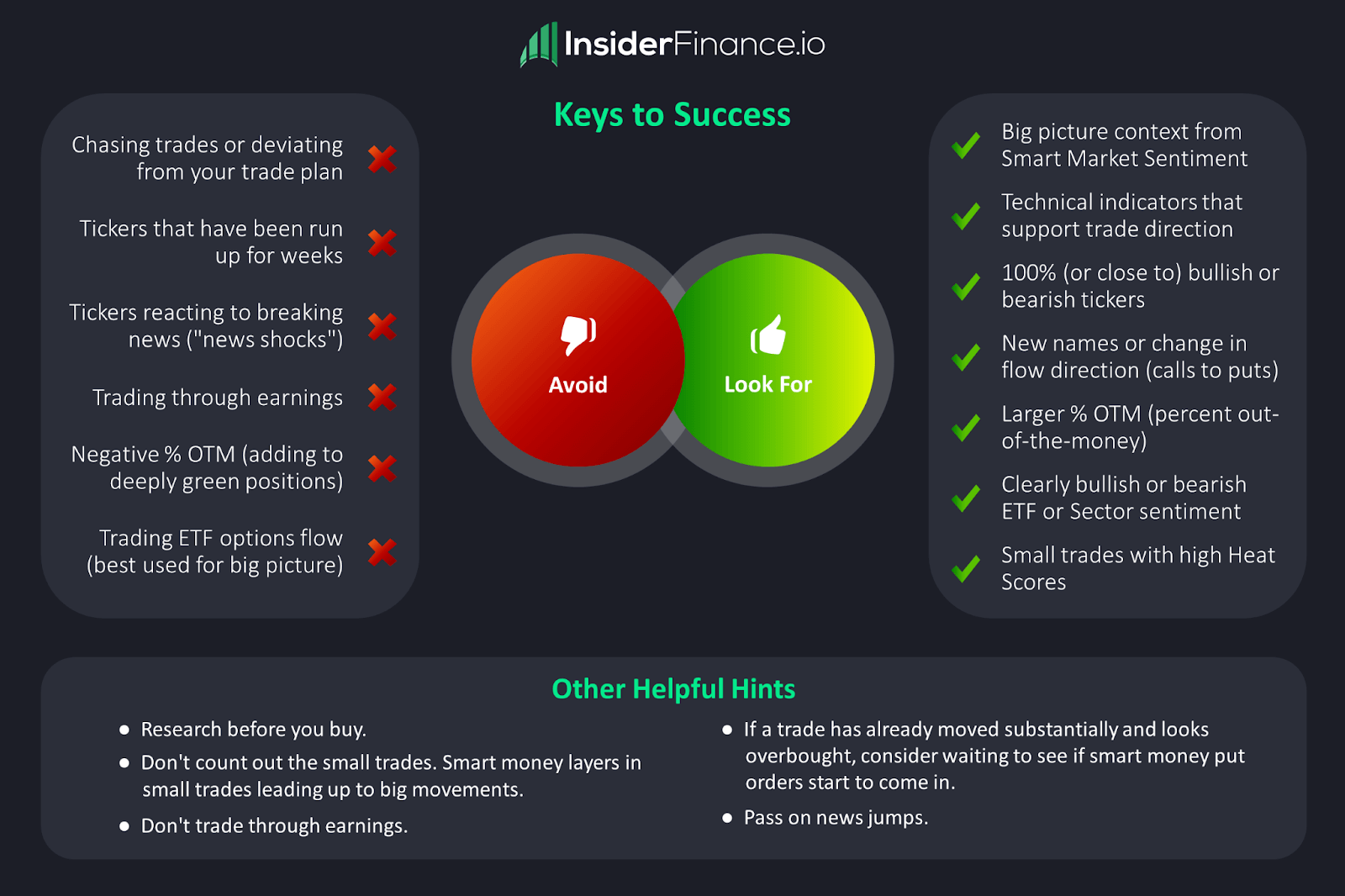
Emotions are the enemy of successful trading. Fear, greed, and hope can cloud your judgment and lead to impulsive decisions. To combat this, it's essential to stick to your trading plan and avoid making decisions based on emotions.
This means not chasing losses, over-leveraging, or holding onto losing trades in the hope they will turn around. Discipline is the cornerstone of long-term success in options trading.
Strengthen Emotional Control:
- Implement a Journal: Keep a detailed trading journal to document your trades, including the rationale behind each trade, the emotions you experienced, and the outcome.
- Reviewing your journal regularly can help you identify emotional triggers and refine your strategy to minimize their impact.
- This self-awareness is crucial for maintaining discipline over the long term.
Key Takeaway: Stick to your trading plan and avoid emotional decision-making by maintaining a detailed trading journal to monitor and control emotional influences.
10. Keep Learning and Adapting

The financial markets are constantly evolving, and so should your trading strategies. Continuous education is key to staying ahead of the curve.
By keeping your skills sharp and staying informed, you can adapt to new challenges and capitalize on emerging opportunities.
Expand Your Educational Horizon:
- Participate in Trading Communities: Engage with online trading communities, forums, or mentorship programs where you can learn from the experiences of other traders.
- These communities often share valuable insights, strategies, and tools that can help you stay ahead of market trends.
- Continuous interaction with other traders also provides fresh perspectives and helps you adapt your strategies in real-time.
Key Takeaway: Commit to continuous learning and adaptation by actively participating in trading communities to stay informed and ahead of the curve.
Transform Your Options Trading with Unbreakable Discipline
Success in options trading doesn’t come by chance—it’s built on a foundation of disciplined strategies, continuous learning, and the ability to adapt to market changes. By adhering to the 10 unbreakable rules outlined in this guide, you’re equipping yourself with the tools and knowledge necessary to thrive in the ever-evolving world of options trading. The path to consistent profitability is paved with preparation, patience, and persistence.
But knowledge alone isn’t enough; you need the right tools to implement these strategies effectively. That’s where InsiderFinance comes in—an indispensable resource for any serious options trader looking to take their trading to the next level.
Elevate Your Trading with InsiderFinance
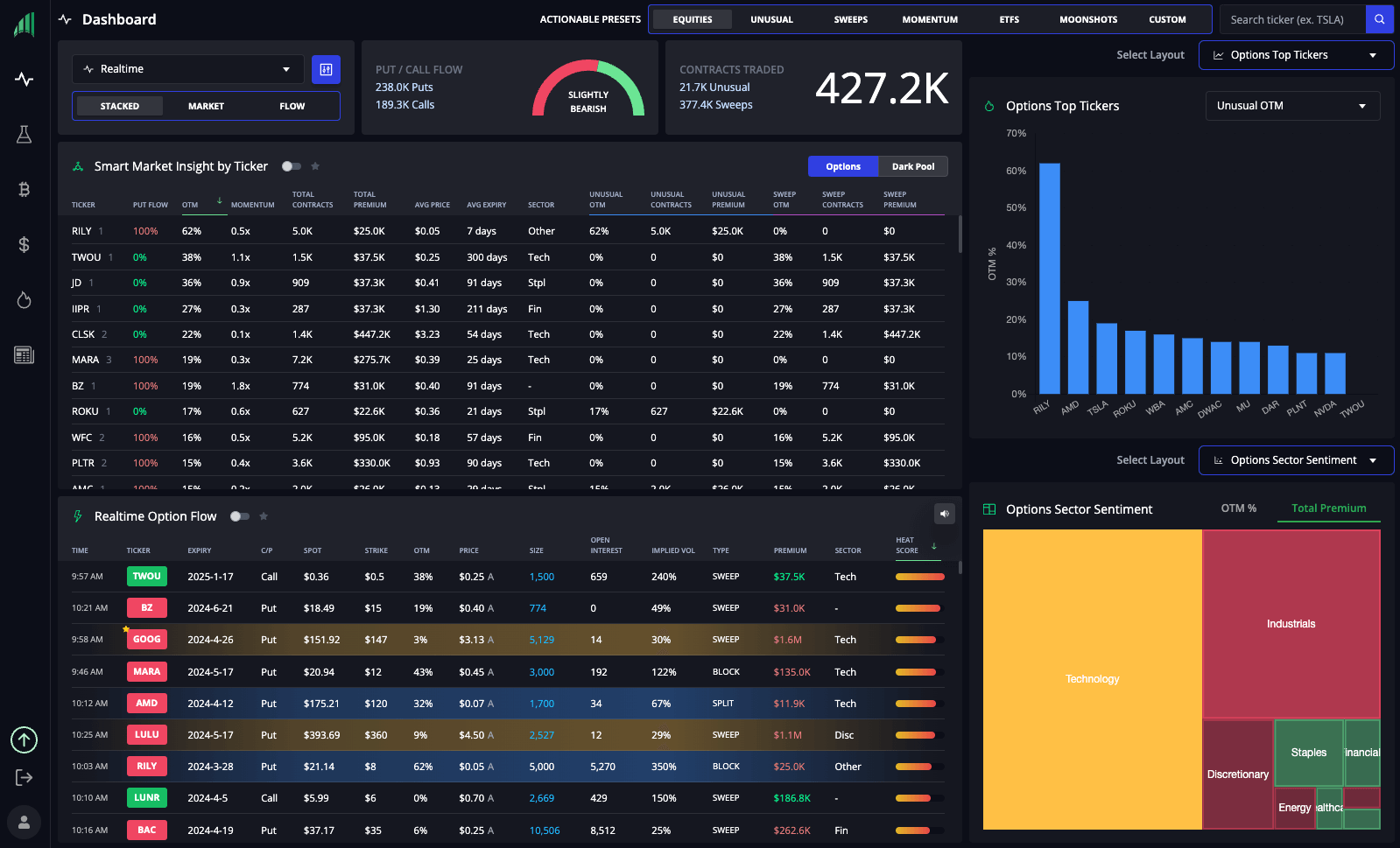
InsiderFinance provides an edge by offering sophisticated tools and insights that align perfectly with the principles discussed in this article. Here’s how InsiderFinance can transform your trading experience:
- Real-Time Options Flow Data: Gain access to live options flow data, allowing you to track where institutional money is moving in real-time. This data can help you anticipate market moves with precision and confidence, staying one step ahead of the average trader.
- Advanced Technical Analysis Tools: Leverage powerful charting tools and indicators that make technical analysis straightforward and actionable, helping you identify optimal entry and exit points based on solid data.
- Comprehensive Market Sentiment Analysis: Stay updated with real-time news sentiment that impact market volatility. InsiderFinance integrates these data points to give you a comprehensive view of market conditions.
- Unusual Options Activity Alerts: Receive alerts for unusual options activity, ensuring you never miss out on significant market moves or potential insider trading signals. This tool is essential for catching high-conviction trades before they happen.
- Multi-Timeframe Analysis Support: With InsiderFinance, you can conduct multi-timeframe analysis seamlessly, ensuring your trades are aligned with both short-term opportunities and long-term trends.
- Customized Risk Management Features: Tailor risk management tools to your specific trading strategy, helping you manage your trades and protect your capital effectively.
Take Action Now
The journey to becoming a disciplined and successful options trader is within your reach. By integrating the unbreakable rules of options trading with the powerful tools provided by InsiderFinance, you can elevate your trading performance and make smarter, more informed decisions.
Don’t just trade—trade with an edge. Try InsiderFinance today and start transforming your options trading journey.
HIGH POTENTIAL TRADES SENT DIRECTLY TO YOUR INBOX
Add your email to receive our free daily newsletter. No spam, unsubscribe anytime.
FAQs
What are the basic concepts every options trader should know?
Understanding strike prices, expiration dates, calls, puts, and the Greeks is crucial for options trading success.
How does technical analysis improve options trading?
Technical analysis helps traders identify entry and exit points by analyzing price trends, support, resistance, and market indicators.
What is options flow data, and why is it important?
Options flow data reveals institutional trading activity, providing insights into potential market moves and enhancing trade decisions.
How can I manage risk effectively in options trading?
Implementing a strict position sizing strategy, using stop-loss orders, and setting a risk/reward ratio are key to managing risk.
Why is multi-timeframe analysis important in options trading?
Multi-timeframe analysis provides a comprehensive view of market trends, ensuring trades align with both short-term and long-term opportunities.
How can unusual options activity indicate potential market moves?
Unusual options activity often signals insider knowledge or high-conviction trades by institutions, helping traders anticipate significant price movements.
What role does market news play in options trading?
Staying informed about market news and economic events helps traders anticipate volatility and adjust their strategies accordingly.
Why is emotional discipline crucial for successful options trading?
Maintaining emotional discipline prevents impulsive decisions, helping traders stick to their plans and avoid costly mistakes.
How can I continuously improve my options trading strategies?
Engaging in continuous learning, joining trading communities, and staying updated on market trends are essential for refining trading strategies.
What are the best tools for options traders to gain an edge?
Tools like InsiderFinance provide real-time options flow data, advanced technical analysis, and unusual options activity alerts to enhance trading decisions.








